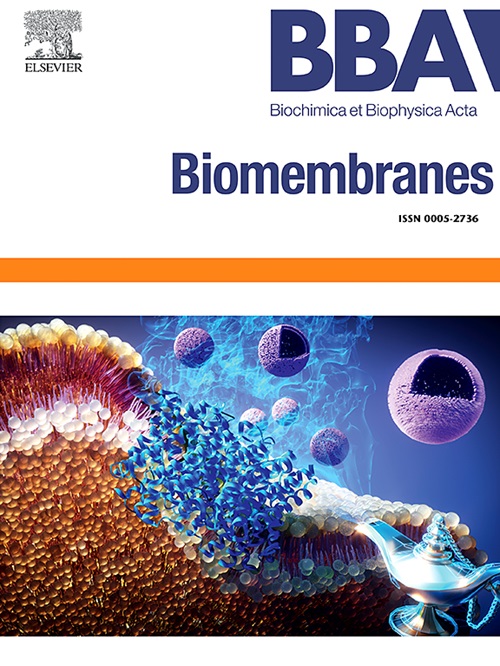Crotalicidin and NA-CATH-ATRA-1-ATRA-1 peptide-induced membrane disruption in human breast cancer cells
IF 2.5
3区 生物学
Q3 BIOCHEMISTRY & MOLECULAR BIOLOGY
引用次数: 0
Abstract
Cationic peptides offer a promising alternative for cancer treatment due to their ability to target cancer cells via standard membrane features, thereby overcoming intratumoral heterogeneity. This study investigates the cytotoxic activity and the membrane-disruptive effects of two snake venom-derived peptides, Crotalicidin (Ctn) and NA-CATH-ATRA-1-ATRA-1 (NA) in human breast cancer cells. Cell viability assays showed that both Ctn and NA significantly diminished the viability of MCF-7 and MDA-MB-231 cells, with NA showing greater potency, as indicated by lower IC50 values of 13.4 μM for MCF-7 and 6.4 μM for MDA-MB-231. Microscopy and flow cytometry revealed size reduction and increased granularity in treated cells. Further analyses indicated that the peptides induced membrane permeabilization, as evidenced by significant propidium iodide uptake, without significantly altering mitochondrial membrane potential. Apoptosis markers such as cleaved caspase-9 and PARP, were not detected by western blot.
Additionally, LDH release and confocal microscopic analysis supported the findings of membrane disruption. Finally, infrared spectroscopy (FT-IR) on lipid extracts revealed peptide-membrane interactions, resulting in phase transitions consistent with membrane disruption. These findings highlight the potent cytotoxic effects of Ctn and NA on breast cancer cells and their potential as novel therapeutic agents.

Crotalicidin和NA-CATH-ATRA-1-ATRA-1肽诱导人乳腺癌细胞的膜破坏。
阳离子肽是一种很有前途的癌症治疗替代方案,因为它们能够通过标准的膜特征靶向癌细胞,从而克服肿瘤内的异质性。本研究研究了两种蛇毒衍生肽Crotalicidin (Ctn)和NA- cath - atra -1- atra -1 (NA)在人乳腺癌细胞中的细胞毒活性和膜破坏作用。细胞活力测定显示,Ctn和NA均显著降低MCF-7和MDA-MB-231细胞的活力,其中NA的效力更强,MCF-7和MDA-MB-231的IC50值分别为13.4 μM和6.4 μM。显微镜和流式细胞术显示处理后的细胞尺寸减小,颗粒度增加。进一步的分析表明,肽诱导膜通透性,如显著的碘化丙啶摄取所证明的那样,没有显著改变线粒体膜电位。western blot未检测到凋亡标志物如cleaved caspase-9和PARP。此外,LDH释放和共聚焦显微镜分析支持膜破坏的发现。最后,脂质提取物的红外光谱(FT-IR)显示肽-膜相互作用,导致与膜破坏一致的相变。这些发现强调了Ctn和NA对乳腺癌细胞的有效细胞毒性作用及其作为新型治疗剂的潜力。
本文章由计算机程序翻译,如有差异,请以英文原文为准。
求助全文
约1分钟内获得全文
求助全文
来源期刊

Biochimica et biophysica acta. Biomembranes
生物-生化与分子生物学
CiteScore
8.20
自引率
5.90%
发文量
175
审稿时长
2.3 months
期刊介绍:
BBA Biomembranes has its main focus on membrane structure, function and biomolecular organization, membrane proteins, receptors, channels and anchors, fluidity and composition, model membranes and liposomes, membrane surface studies and ligand interactions, transport studies, and membrane dynamics.
 求助内容:
求助内容: 应助结果提醒方式:
应助结果提醒方式:


